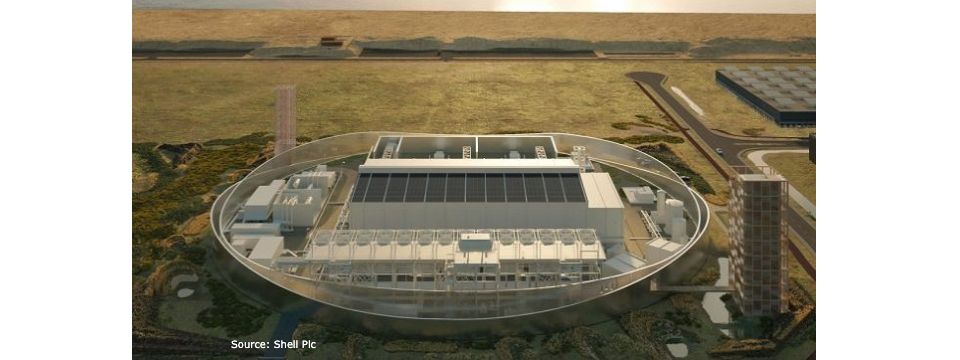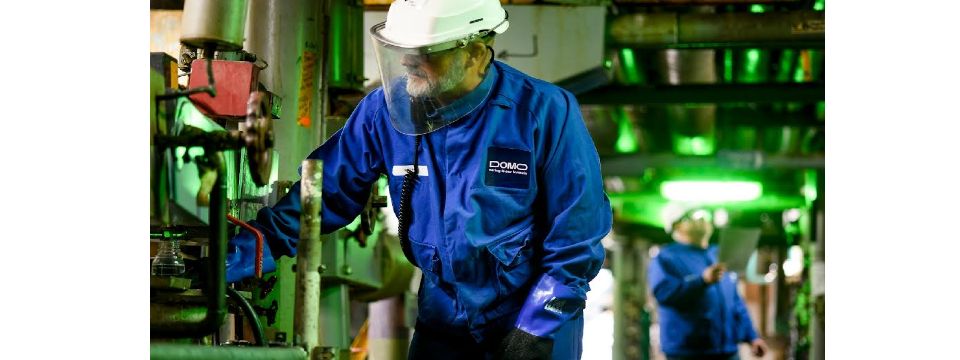Shell to build Europe’s largest renewable hydrogen plant

Shell is building the largest green hydrogen plant in Europe, which it will use to implement as a cleaner energy source compared with other fuels.
The facility, called Holland Hydrogen I, will be built at the port of Rotterdam in the Netherlands and will have the capacity to produce up to 66 tons of renewable hydrogen per day. The plant will supply green hydrogen to Shell Energy and Chemicals Park Rotterdam, which Shell says will help decarbonize fuels such as petrol, diesel, and jet fuel.
The 200-megawatt electrolyzer facility will also receive renewable energy from the offshore wind farm Hollandse Kust, which is partially owned by Shell. The plant is expected to be operational in 2025, and the hydrogen will be transported via the HyTransPort pipeline.
Hydrogen is a big piece of the European Union’s energy transition strategy, and the clean energy source is also expected to play a significant role in net-zero goals worldwide. The International Renewable Energy Agency expects it to account for 12% of energy consumption by 2050, and the International Energy Agency says its production needs a six-fold increase to reach net zero by then.
Shell’s plans come on the heels of several other big green hydrogen projects in Europe. Plug Power recently said it would build a plant in Belgium with the capacity of 35 tons of green hydrogen production a day. A collaboration between FuelCell Energy and TuNur will increase hydrogen supply in Europe and North Africa.
Other international hydrogen projects include Toyota producing the fuel for its Woven City project in Japan, and SoCalGas planning the largest green hydrogen infrastructure system in the United States.
Shell says it owns nearly 10% of the world’s capacity of hydrogen electrolyzers. Those projects include a 20-megawatt facility in China and a 10-megawatt proton exchange membrane electrolyzer in Germany. Those facilities can produce 3,000 metric tons and 1,300 metric tons, respectively, of hydrogen per year, according to the company.
The facility, called Holland Hydrogen I, will be built at the port of Rotterdam in the Netherlands and will have the capacity to produce up to 66 tons of renewable hydrogen per day. The plant will supply green hydrogen to Shell Energy and Chemicals Park Rotterdam, which Shell says will help decarbonize fuels such as petrol, diesel, and jet fuel.
The 200-megawatt electrolyzer facility will also receive renewable energy from the offshore wind farm Hollandse Kust, which is partially owned by Shell. The plant is expected to be operational in 2025, and the hydrogen will be transported via the HyTransPort pipeline.
Hydrogen is a big piece of the European Union’s energy transition strategy, and the clean energy source is also expected to play a significant role in net-zero goals worldwide. The International Renewable Energy Agency expects it to account for 12% of energy consumption by 2050, and the International Energy Agency says its production needs a six-fold increase to reach net zero by then.
Shell’s plans come on the heels of several other big green hydrogen projects in Europe. Plug Power recently said it would build a plant in Belgium with the capacity of 35 tons of green hydrogen production a day. A collaboration between FuelCell Energy and TuNur will increase hydrogen supply in Europe and North Africa.
Other international hydrogen projects include Toyota producing the fuel for its Woven City project in Japan, and SoCalGas planning the largest green hydrogen infrastructure system in the United States.
Shell says it owns nearly 10% of the world’s capacity of hydrogen electrolyzers. Those projects include a 20-megawatt facility in China and a 10-megawatt proton exchange membrane electrolyzer in Germany. Those facilities can produce 3,000 metric tons and 1,300 metric tons, respectively, of hydrogen per year, according to the company.





